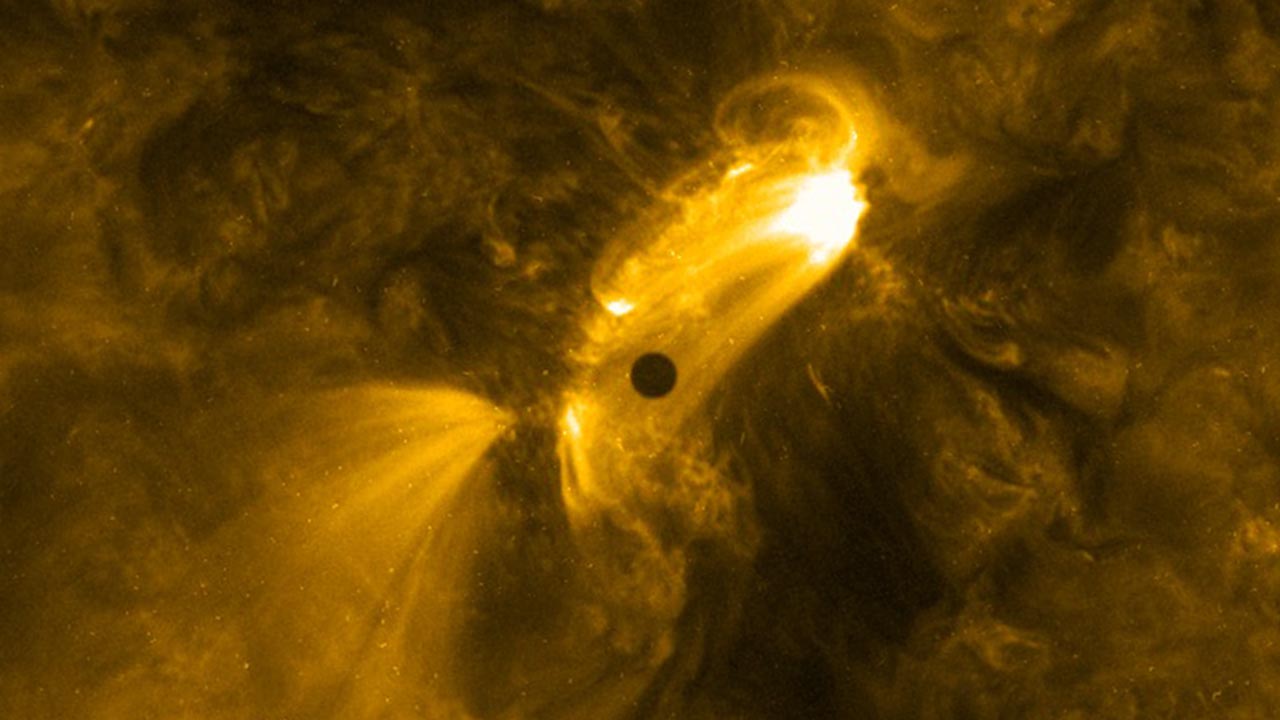Mercury In Motion

Mercury appears as a black dot while crossing the face of the sun during a rare transit.
On May 9, 2016, skywatchers pointed their telescopes at the sun to get a glimpse of a rare astronomical event that happens a little more than once a decade—a transit of Mercury. The planet appeared as a tiny black dot as it glided in front of the sun’s blazing disk over a period of seven and a half hours. Although Mercury zooms around the sun every 88 days, Earth, the sun and Mercury rarely align. As a result, Mercury transits occur only about 13 times a century. Transits provide a great opportunity to study the way planets and stars move in space—information that has been used throughout the ages to better understand the solar system. Today, transits help scientists to calibrate their instruments. NASA's Solar Dynamics Observatory, or SDO, spacecraft watched the transit for just that reason. SDO studies the sun 24/7 and captured ultra high-definition images of Mercury's entire journey in multiple wavelengths. Explore the video and images for spectacular views of the event.
This video shows views of the Mercury transit captured by NASA's SDO spacecraft on May 9, 2016.

The transit began around 7:12 a.m. EDT, when the planet's dark silhouette appeared to first edge over the sun's limb.

Spot the dot: Mercury hovers above a bright region on the sun near the center of this image.

It took about seven and a half hours for Mercury to travel across the sun's brilliant disk.
Credits
Please give credit for this item to:
NASA's Goddard Space Flight Center
Video and images courtesy of NASA/SDO
-
Animator
- Tom Bridgman (Global Science and Technology, Inc.)
-
Producer
- Genna Duberstein (USRA)
-
Scientist
- Barbara Thompson (NASA/GSFC)
-
Writer
- Sarah Schlieder (NASA/GSFC)
Release date
This page was originally published on Thursday, May 12, 2016.
This page was last updated on Wednesday, May 3, 2023 at 1:48 PM EDT.
